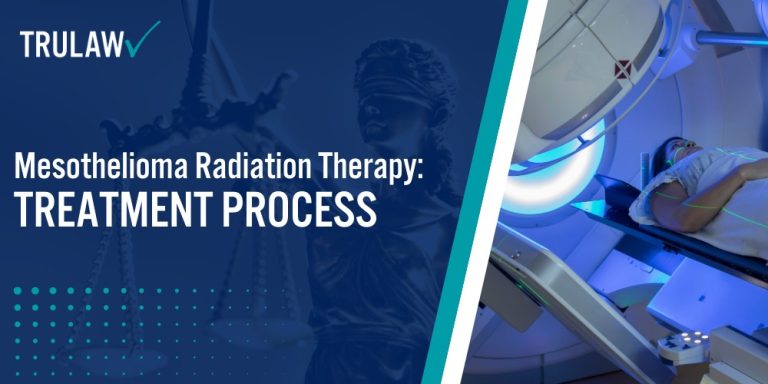Radiation treatments for mesothelioma include two primary approaches: external beam radiation therapy (EBRT) and internal radiation therapy.
For malignant pleural mesothelioma, these treatments can effectively target and shrink tumors while helping to prevent cancer spread and recurrence.
The specific type of radiation therapy selected depends on factors like tumor location, cancer stage, and overall patient health.
External Beam Radiation
External beam radiation therapy is the most common treatment method for pleural mesothelioma patients, delivering high-energy rays directly to tumors from outside the body.
This non-invasive approach allows doctors to target specific areas while minimizing damage to surrounding healthy tissue.
Advanced EBRT techniques include:
- 3D Conformal Radiation: Uses detailed imaging to create precise 3D maps of tumors for targeted treatment
- Intensity Modulated Radiation Therapy: Varies radiation beam strength to deliver higher doses to tumors while protecting healthy tissue
- Stereotactic Body Radiation Therapy: Combines imaging and radiation delivery for continuous monitoring during treatment
- Image-Guided Radiation: Takes regular scans to adjust treatment as tumor position changes
These specialized techniques help mesothelioma radiation patients receive precise treatment while minimizing side effects.
Each method offers unique advantages, with newer technologies providing increasingly accurate tumor targeting and improved outcomes.
Internal Radiation Therapy
Internal radiation therapy, though less commonly used for pleural mesothelioma, involves placing radioactive material either directly into or near tumor sites.
This method can deliver concentrated doses of radiation to specific areas while limiting exposure to surrounding tissues.
Internal radiation approaches include:
- Brachytherapy: Places radioactive implants directly into the tumor site
- Systemic Radiation: Delivers radioactive substances through IV treatment
- Intraoperative Radiation: Applies radiation during surgical procedures
- Targeted Radiotherapy: Uses specialized delivery methods to focus radiation on specific tumor locations
When appropriate for individual cases, internal radiation therapy can provide effective treatment options for mesothelioma patients.
These methods may be particularly beneficial when combined with other treatments as part of a comprehensive care plan.
Brachytherapy
Brachytherapy, an internal radiation therapy option, involves placing radioactive materials directly into or near mesothelioma tumors to deliver concentrated doses of radiation.
While less common than external beam methods, this approach can provide targeted treatment in specific cases.
Key aspects of brachytherapy treatment include:
- Direct Delivery: Placement of radioactive seeds or materials directly at tumor sites
- Precise Targeting: Concentrated radiation exposure to cancer cells while limiting healthy tissue damage
- Treatment Duration: Can be temporary or permanent depending on the specific approach
- Dose Control: Allows for higher radiation doses due to precise placement
This internal radiation method may be recommended as part of a comprehensive treatment plan, particularly when combined with other therapies to enhance overall effectiveness for pleural mesothelioma treatment.



